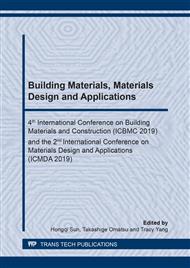p.185
p.191
p.203
p.208
p.215
p.222
p.229
p.235
p.241
Surface Modification of Steel by Anodic Plasma Electrolytic Boronitriding and Polishing
Abstract:
The paper shows the possibility of plasma electrolytic polishing of the steel surface after its chemical-thermal treatment. Positive results of the plasma electrolytic polishing are obtained for low carbon steel after its anodic plasma electrolytic boronitriding. An X-ray diffractometer and a scanning electron microscopy were used to characterize the phase composition of the modified layer and its surface morphology. Surface roughness was studied with the use of a roughness tester. The hardness of the treated and untreated samples was measured using a microhardness tester. Corrosion properties of the samples treated surfaces were evaluated using potentiodynamic polarisation tests in solution of sodium chloride. The reduction of the surface roughness of 1.7 times and the corrosion current density of 1.5 times of boronitrided steel by plasma polishing using mode of current interruption for 2 min without changing the structure of the diffusion layers is shows.
Info:
Periodical:
Pages:
229-234
Citation:
Online since:
October 2019
Authors:
Price:
Сopyright:
© 2019 Trans Tech Publications Ltd. All Rights Reserved
Share:
Citation:


